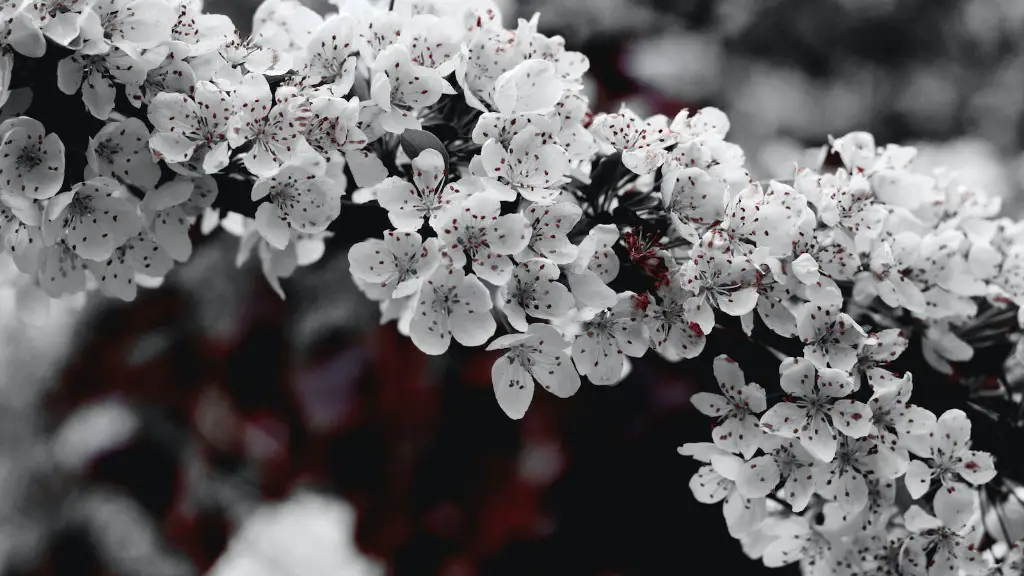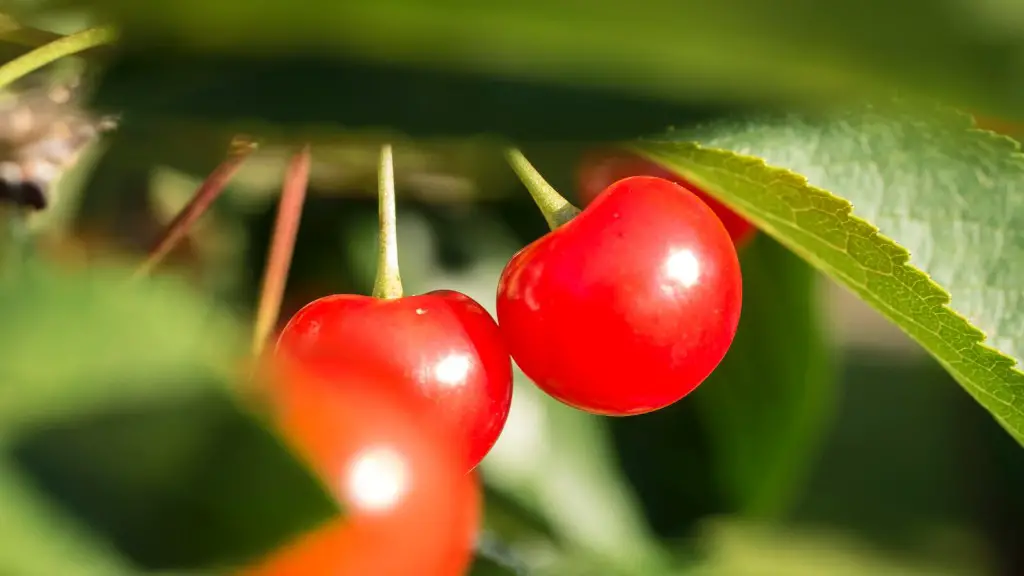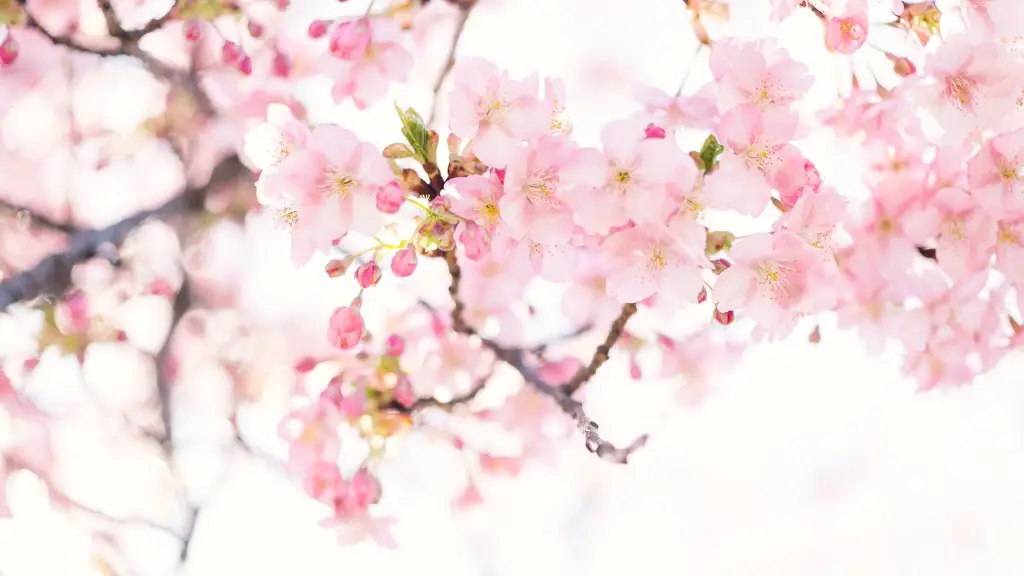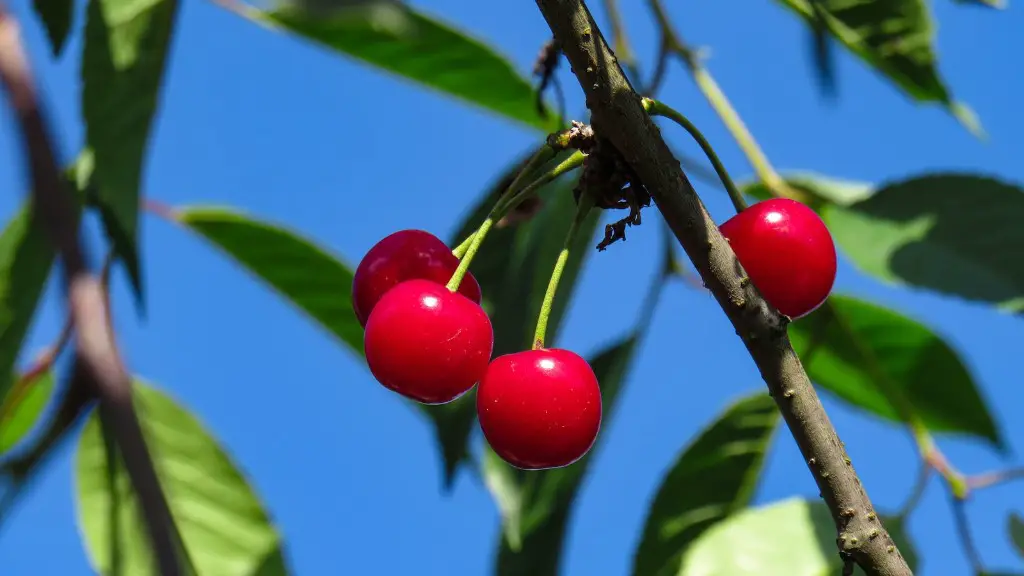When you plant a cherry tree, you will need to start with a young tree from a nursery. You will need to choose a spot in your yard that gets full sun and has well-drained soil. You will also need to make sure that the spot is wide enough to accommodate the tree’s roots. Once you have found the perfect spot, you will need to dig a hole that is twice the size of the tree’s roots. After the hole is dug, you will need to remove the tree from its container and loosen the roots. You will then need to place the tree in the hole and fill the hole with dirt. Once the hole is filled, you will need to water the tree deeply.
1.Prepare the planting site by loosening the soil to a depth of 18 inches with a shovel or hoe. Break up any large clods of dirt. Add 2 to 4 inches of compost or aged manure to the planting site and work it in to improve drainage.
2.Dig a hole that is twice the width of the tree’s root ball and just as deep.
3.Carefully remove the tree from its container or nursery wrapping. Gently loosen any roots that are matted or circling the root ball.
4.Place the tree in the hole so that the roots are spread out evenly. The top of the tree’s root ball should be level with the ground.
5.Fill the hole with soil, tamping it down around the tree’s roots as you go. Water the tree deeply.
6.Apply a 2- to 4-inch layer of mulch around the base of the tree, being careful not to pile it up against the tree’s trunk.
What time of year is best to plant a cherry tree?
When planting cherry trees, it is best to do so in the spring or fall when the weather is mild. The ground is often harder during winter, when it may be frozen, and in some climates during the summer, when exposed ground may be partially baked. This can make it difficult for the tree to establish itself. Choose a spot that gets full sun and has well-drained soil. Avoid planting too close to other trees or structures, as the cherry tree will need room to grow.
The two main types of cherry trees are sweet and sour. Both types are easy to grow and produce fruit that can be used in a variety of ways. Sweet cherries are often eaten raw, while sour cherries are used in baking and cooking. If you want to grow sweet cherries, you will need to plant at least 2-3 trees in order to ensure pollination. There is also a new type of dwarf sweet cherry tree that is self-pollinating, which may be available in your area.
Where is the best place to plant cherry tree
Cherry trees need a warm, sheltered spot that is free from frost in order to thrive. They also prefer well-drained, slightly acidic soil. Morello cherry varieties are generally smaller and can tolerate some shade, so they can be grown against a north-facing boundary. These varieties are also self-fertile, so they can be grown without a planting partner.
One sour cherry tree needs to be planted for pollination and fruit set. Many sweet cherry varieties cannot produce fruit from their own pollen and are considered self-unfruitful. These plants require cross-pollination for fruit set.
How long does it take a cherry tree to bear fruit?
It takes patience to grow a cherry tree, but the reward is sweet—literally! These trees can take three years to establish and begin bearing fruit in the fourth year. Most fruit crops don’t produce the same year you plant them, but once a cherry tree begins fruiting, it can continue to do so for years. A mature tree can produce 30-50 quarts of fruit in a season. So if you’re looking for a long-term investment that will keep bearing fruit for years to come, a cherry tree is a great option.
It takes on average 4 to 5 years for a cherry tree planted as a sapling to reach maturity. At that time, you can expect to harvest a full crop every year. However, some varieties have faster growth rates than others.
How tall is a 3 year old cherry tree?
The Barbados cherry tree grows to be 3-35 ft tall and is approximately 3-4 years old. The tree produces sweet-tart fruit that is excellent for making jams, jellies, pies, and many other delicious treats.
Buds exposed to cold temperatures are at risk of damage. Once temperatures drop below 27 degrees, 10 percent of blossoms can be damaged. Sustained colder weather over multiple days can leave 90 percent of those blossoms so damaged that they will not bloom. Protect your blossoms by covering them up or moving them indoors if possible.
Are cherry trees hard to maintain
Cherry trees are beautiful and delicious, and growing them can be a great addition to your home orchard. However, it’s important to know that there are two main types of cherries – sweet and sour – and that each type requires slightly different care. In general, cherry trees need good air circulation, an adequate amount of sunlight, and well-drained and fertile soil. However, cherry trees are vulnerable to root rot, so it’s important to make sure the soil is well-drained. With a little bit of care, you can grow healthy and bountiful cherry trees that will provide you with years of enjoyment.
It is important to space your cherry trees correctly when planting them, as it will affect their growth. Standard cherries should be planted 35-40 feet apart, while dwarf trees can be spaced 8-10 feet apart. It is also important to water your trees consistently, especially during their first year.
How far away from a house should a cherry tree be planted?
When choosing a rootstock for your fruit tree, you will need to consider the size of the tree that you would like to ultimately have. For fruit trees grafted on dwarf rootstocks, that means a tree that is 3 meters or so in height. For fruit trees on vigorous rootstocks, you will need to allow for a tree that is 6 meters or more in height.
Cherry trees are lovely, but they can be dangerous if planted too close to buildings. High winds and storms can break branches, which can then damage property if they fall. For the safety of your home and garage, space cherry trees at least 15 feet away from all structures on your property.
How can you tell if a cherry tree is male or female
Many trees are hermaphroditic, meaning that their flowers contain both male and female reproductive parts. Other species have male trees and female trees, which can be distinguished by looking at their flowers. Male reproductive parts are the pollen-laden stamen, while female parts are the egg-holding pistils.
One standard cherry tree can produce up to 150lbs of fruit, which is more than enough for a family. Two dwarf trees or one to two standard trees would also suffice.
How do you start a cherry seed?
When planting seeds, it is important to place them in a south-facing window or greenhouse. This will ensure that they receive the proper amount of sunlight and warmth. Additionally, it is important to keep the soil moist and not let it dry out. Seedlings should begin to emerge from the soil surface within about two weeks. Once they have grown their second set of leaves, they can be planted in individual pots.
Cherry trees are light feeders and prefer a low-nitrogen fertilizer such as 5-10-10 or 10-15-15. Take care not to over-fertilize, or you may produce a tree that is unbalanced, which can affect fruit production and leave the tree susceptible to pests and disease.
Final Words
To plant a cherry tree, first dig a hole that is twice the width of the tree’s root ball and just as deep. Loosen the roots gently with your hands and place the tree in the hole so that the roots are spread out evenly. Fill in the hole with soil, tamping it down lightly as you go, and water the tree well.
When planting a cherry tree, it is important to choose a location that has well-drained soil and full sun. The hole for the tree should be twice as wide as the roots and just deep enough so the tree is at the same level it was in the pot. After backfilling the hole with soil, water the tree deeply.





